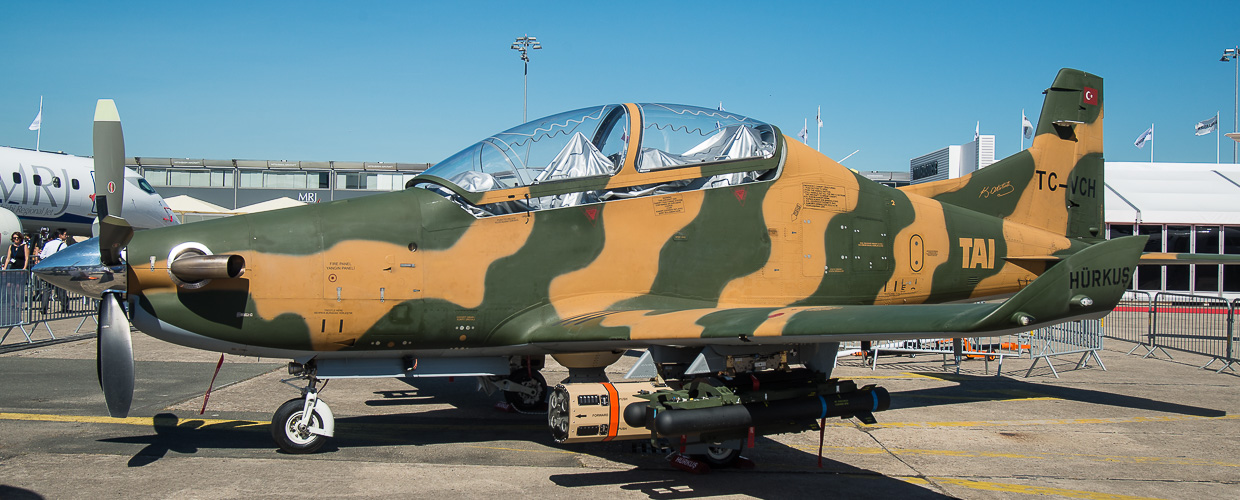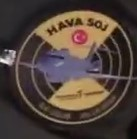- Joined
- 15 July 2020
- Messages
- 1,496
- Reaction score
- 4,604
The Key to Electronic Dominance in the Sky: The HAVA SOJ Project

The HAVA SOJ Project is carried out by a collaboration between Turkish Aerospace and ASELSAN, and was initiated to develop the electronic warfare special mission aircraft needed by the Turkish Armed Forces. Equipped with the capabilities of remote electronic support in air and electronic combat, the HAVA SOJ Systems are expected to contribute to Turkey’s goal to minimize its foreign dependence in defense.
The HAVA SOJ Project was created to develop the electronic warfare special mission aircraft needed by the Turkish army. Carried out by Turkish Aerospace and ASELSAN in order to meet the needs of the Turkish Air Force Command, the project includes the HAVA SOJ aircraft with remote electronic support and electronic attack capabilities as well as planning and training centers, hangar and SOJ fleet buildings, spare parts, ground support equipment, training, and integrated logistics support services.
The Integrated HAVA SOJ System, which is planned to be used by the Turkish Air Force in air attack operations against external threats, allows the enemy to be detected, and tampered with or deceived without any radar and communication facilities entering the threat zone.
The system, which will provide capabilities to implement mission planning, execution, post-mission analysis, and aircraft and mission system operation/management/maintenance services, consists of two main elements:
• A HAVA SOJ System (Remote Electronic Support)
• A Planning and Training Center (ground/mission support elements
Project services The HAVA SOJ System, which provides interoperability between the mission system and aircraft systems, will perform remote ED/ET missions under safe flight conditions. In the process of converting the HAVA SOJ Platform to a SOJ System, Turkish Aerospace will undertake the Group-A structural modification designs (inner and outer hull) on the Bombardier Global 6000 aircraft; the Electrical Power Distribution System (EPDS) design that provides the necessary electrical power to the mission systems; and the design of the Cooling System (SCS/LCS) which provides the cooling capacity, detail part manufacturing, modification, assembly, system integration, and SOJ aircraft certification. There will also be an examination of the effects of the external shape changes of the aircraft on systems such as flight control (FCU), stall prevention, and warning (SPC), while the systems will also be updated according to the results obtained. One of the main outputs of the project will be the delivery of four special mission aircraft converted to the HAVA SOJ system to the Air Force Command with their military Supplemental Type Certificates (STC) and integrated logistics support activities.
How is the process being managed?
In the development of SOJ aircraft, Turkish Aerospace carries out an integrated project management process together with its business partner ASELSAN and a number of foreign subcontractors. As the platform integrator, Turkish Aerospace integrates the designs, systems, and components realized by all of the aircraft's stakeholders. The process is carried out in accordance with the integrated project calendar within the framework of interfaces and job descriptions.
Systems integrated into the aircraft
The mission systems on the HAVA SOJ aircraft perform detection, identification, recognition, classification, direction, and positioning tasks for traditional and new generation complex land, air, and sea radar communications broadcasts. Electronic warfare systems that are integrated with electronic support systems use various scrambling and deception techniques. The HAVA SOJ systems operate outside the radar and weapon ranges of enemy air defense systems, fulfilling their duty safely.
The HAVA SOJ Systems perform their tasks in coordination with the Planning and Training Center on the ground. By suppressing enemy air defense radar and communication systems, the HAVA SOJ Systems allow friendly combat aircraft to safely perform their attack duties. Friendly combat aircraft can enter and exit the enemy airspace through the safe corridors created by the HAVA SOJ aircraft and perform their targeted attack missions.
Bombardier Global 6000 aircraft are used in the project
The Bombardier Global 6000 is a business jet aircraft capable of handling a flight duration of up to 12 hours. Globally, at least five Global 6000 aircraft have been transformed into special mission aircraft. With a service ceiling at an altitude of 51,000 feet, the Global 6000 is an aircraft that provides sufficient electrical power to mission systems with its double engines and generator systems.
Benefits for Turkey
The HAVA SOJ is a highly complex project with a high degree of difficulty that can only be realized by a few companies in the global defense industry. When it enters service, it will give the Turkish Air Force Command air superiority in both the region and the world. In this respect, HAVA SOJ systems have strategic importance for Turkey. The capabilities of the system will contribute to Turkey’s goal of pursuing an effective and active foreign policy and will add an important deterrent element. This system, which undertakes a very effective weapon duty in wartime, will be a deterrent for our enemies in times of peace.
Contribution to our company
Within the scope of transforming a commercial aircraft in the FAR-25/CS-25 category into a special mission aircraft, aircraft modification design, detail part manufacturing, assembly, integration, testing, and verification will gain certification competence for the change application evaluated in the “major” class. With these capabilities and SOJ aircraft, high export potential can be achieved. In this way, the information and technology obtained will be exported and an important step will be taken on the path to becoming a global aviation and space company with worldwide competitive power.
Project calendar
The provisional acceptance of HAVA SOJ Systems will begin in the second half of 2025. The aircraft will be fully operational by the end of 2026. The preliminary design studies of the project, whose System Requirements Review (SRR) phase has been completed, are still underway

The SOJ mission systems will be integrated on four Bombardier Global 6000 aircraft. In addition, in order to be used in mission systems’ antenna tests, design and implementation of reinforcement will be carried out on the aircraft and a Global Express aircraft will be placed in the tower opposite of ASELSAN's test site.
Source - TAI's VOICE https://dergi.tai.com.tr/pdf/120.pdf

The HAVA SOJ Project is carried out by a collaboration between Turkish Aerospace and ASELSAN, and was initiated to develop the electronic warfare special mission aircraft needed by the Turkish Armed Forces. Equipped with the capabilities of remote electronic support in air and electronic combat, the HAVA SOJ Systems are expected to contribute to Turkey’s goal to minimize its foreign dependence in defense.
The HAVA SOJ Project was created to develop the electronic warfare special mission aircraft needed by the Turkish army. Carried out by Turkish Aerospace and ASELSAN in order to meet the needs of the Turkish Air Force Command, the project includes the HAVA SOJ aircraft with remote electronic support and electronic attack capabilities as well as planning and training centers, hangar and SOJ fleet buildings, spare parts, ground support equipment, training, and integrated logistics support services.
The Integrated HAVA SOJ System, which is planned to be used by the Turkish Air Force in air attack operations against external threats, allows the enemy to be detected, and tampered with or deceived without any radar and communication facilities entering the threat zone.
The system, which will provide capabilities to implement mission planning, execution, post-mission analysis, and aircraft and mission system operation/management/maintenance services, consists of two main elements:
• A HAVA SOJ System (Remote Electronic Support)
• A Planning and Training Center (ground/mission support elements
Project services The HAVA SOJ System, which provides interoperability between the mission system and aircraft systems, will perform remote ED/ET missions under safe flight conditions. In the process of converting the HAVA SOJ Platform to a SOJ System, Turkish Aerospace will undertake the Group-A structural modification designs (inner and outer hull) on the Bombardier Global 6000 aircraft; the Electrical Power Distribution System (EPDS) design that provides the necessary electrical power to the mission systems; and the design of the Cooling System (SCS/LCS) which provides the cooling capacity, detail part manufacturing, modification, assembly, system integration, and SOJ aircraft certification. There will also be an examination of the effects of the external shape changes of the aircraft on systems such as flight control (FCU), stall prevention, and warning (SPC), while the systems will also be updated according to the results obtained. One of the main outputs of the project will be the delivery of four special mission aircraft converted to the HAVA SOJ system to the Air Force Command with their military Supplemental Type Certificates (STC) and integrated logistics support activities.
How is the process being managed?
In the development of SOJ aircraft, Turkish Aerospace carries out an integrated project management process together with its business partner ASELSAN and a number of foreign subcontractors. As the platform integrator, Turkish Aerospace integrates the designs, systems, and components realized by all of the aircraft's stakeholders. The process is carried out in accordance with the integrated project calendar within the framework of interfaces and job descriptions.
Systems integrated into the aircraft
The mission systems on the HAVA SOJ aircraft perform detection, identification, recognition, classification, direction, and positioning tasks for traditional and new generation complex land, air, and sea radar communications broadcasts. Electronic warfare systems that are integrated with electronic support systems use various scrambling and deception techniques. The HAVA SOJ systems operate outside the radar and weapon ranges of enemy air defense systems, fulfilling their duty safely.
The HAVA SOJ Systems perform their tasks in coordination with the Planning and Training Center on the ground. By suppressing enemy air defense radar and communication systems, the HAVA SOJ Systems allow friendly combat aircraft to safely perform their attack duties. Friendly combat aircraft can enter and exit the enemy airspace through the safe corridors created by the HAVA SOJ aircraft and perform their targeted attack missions.
Bombardier Global 6000 aircraft are used in the project
The Bombardier Global 6000 is a business jet aircraft capable of handling a flight duration of up to 12 hours. Globally, at least five Global 6000 aircraft have been transformed into special mission aircraft. With a service ceiling at an altitude of 51,000 feet, the Global 6000 is an aircraft that provides sufficient electrical power to mission systems with its double engines and generator systems.
Benefits for Turkey
The HAVA SOJ is a highly complex project with a high degree of difficulty that can only be realized by a few companies in the global defense industry. When it enters service, it will give the Turkish Air Force Command air superiority in both the region and the world. In this respect, HAVA SOJ systems have strategic importance for Turkey. The capabilities of the system will contribute to Turkey’s goal of pursuing an effective and active foreign policy and will add an important deterrent element. This system, which undertakes a very effective weapon duty in wartime, will be a deterrent for our enemies in times of peace.
Contribution to our company
Within the scope of transforming a commercial aircraft in the FAR-25/CS-25 category into a special mission aircraft, aircraft modification design, detail part manufacturing, assembly, integration, testing, and verification will gain certification competence for the change application evaluated in the “major” class. With these capabilities and SOJ aircraft, high export potential can be achieved. In this way, the information and technology obtained will be exported and an important step will be taken on the path to becoming a global aviation and space company with worldwide competitive power.
Project calendar
The provisional acceptance of HAVA SOJ Systems will begin in the second half of 2025. The aircraft will be fully operational by the end of 2026. The preliminary design studies of the project, whose System Requirements Review (SRR) phase has been completed, are still underway

The SOJ mission systems will be integrated on four Bombardier Global 6000 aircraft. In addition, in order to be used in mission systems’ antenna tests, design and implementation of reinforcement will be carried out on the aircraft and a Global Express aircraft will be placed in the tower opposite of ASELSAN's test site.
Source - TAI's VOICE https://dergi.tai.com.tr/pdf/120.pdf







